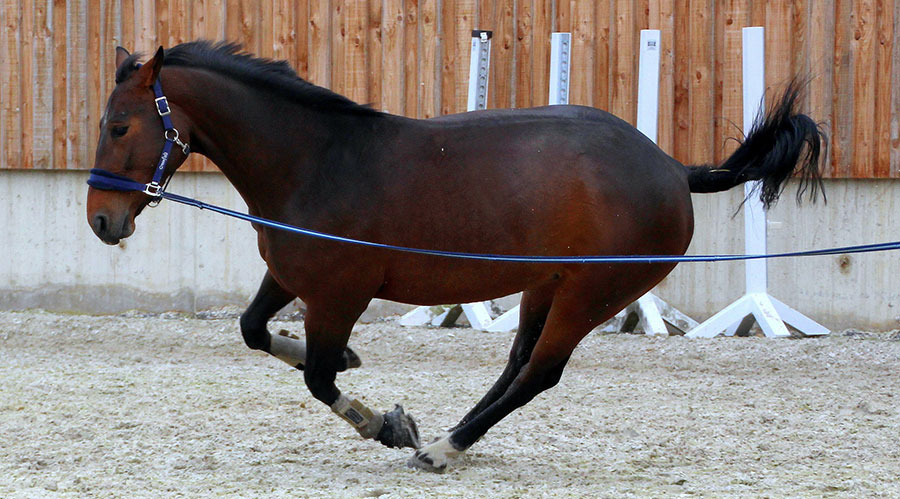This video shows this man's first time lunging a horse, courtesy of the EIE Editorial team.
Are you new to lunging? Here are some recommendations if you are a beginner.
What is lunging? You've seen it done at the circus, with horses in the ring. The horse is at the end of a long line and the handler is in the center of a large circle. The horse goes around the outside edge of the ring with the handler on the ground in the center, holding the line. It's a great way to warm up your horse before you ride. It's also great way for new riders to understand the movement of a horse without having to manage control of the animal.
1. Start with a horse that is experienced at lunging. A person with no experience shouldn't be trying to lunge a horse with no experience. Some people may think "they can learn together. We say. "Fuggetaboutit!"
2. Your equipment is a lunge line and whip. Practice cracking the whip without the horse nearby and get the feel of it. We've found it is best to use the effects of the sound and we've NEVER struck a horse with a lunge whip.
3. The lunge line is long so make sure it is wrapped neatly in your hand and not dangling on the ground. We once witnessed that part of the lunge line dropped to the ground, got twisted around her leg. got tripped by the lunging horse and she fell. The horse got loose but fortunately everyone was OK!
4. You can use a halter, bridle or cavison. Some people also use side reins but for the purposes here, we'll stick to the basics. You can clip the lunge line to the side or bottom of the halter. If using a bridle, you can clip it to the side of the bit. Please make sure to either remove the reins or fasten them so they don't come loose to cause the horse to trip.

5. Place the horse where you want him/her to start and point her in the direction where you want to start, walk to the center of the circle. Horses always appreciate a larger circle versus tight turns as they are easier to navigate and better for their legs.
6. Pick up the slack in the lunge line and make sure it doesn't drag.
7. Start with clucking to the horse to get started. If needed, make a small cracking so9und with the whip and escalate the sound if needed. If a horse is experienced with lunging. you'll find that just showing a horse the whip may be sufficient!
8. Start with a walk. Try that for a couple of minutes and then you can pick up the pace to a trot and eventually a canter. The time will vary but we've found that most people lunge approximately 10-15 minutes on each side. If a horse is very fresh, they may want to get the bucks out and it's better when you're on the ground than on their back!
9. Try not to get dizzy! Sometimes it's easier said than done. Some people find that looking at the tail while lunging helps. However, if you get dizzy, take a break!
10. When you're done going in one direction, tell the horse to "whoa" and pull the horse up with the lunge line if necessary. Then, walk to the perimeter of the circle to the horse, turn him around, and if the lunge line is clipped on the side. clip it on the other side and start the process in the opposite direction.
You'll find that lunging is a great way to bond with your horse. It's great to do before riding or even if you don't (or have a horse which hasn't started under saddle or unable to carry a rider) it is very helpful to get the horse moving. It is also a way to see if a horse shows any signs of lameness. If so, stop the lunging immediately and consult your veterinarian. If you are struggling with lunging, reach out to a professional for help. Have fun and enjoy!
You can find more interesting articles in our section on Health & Education.

































